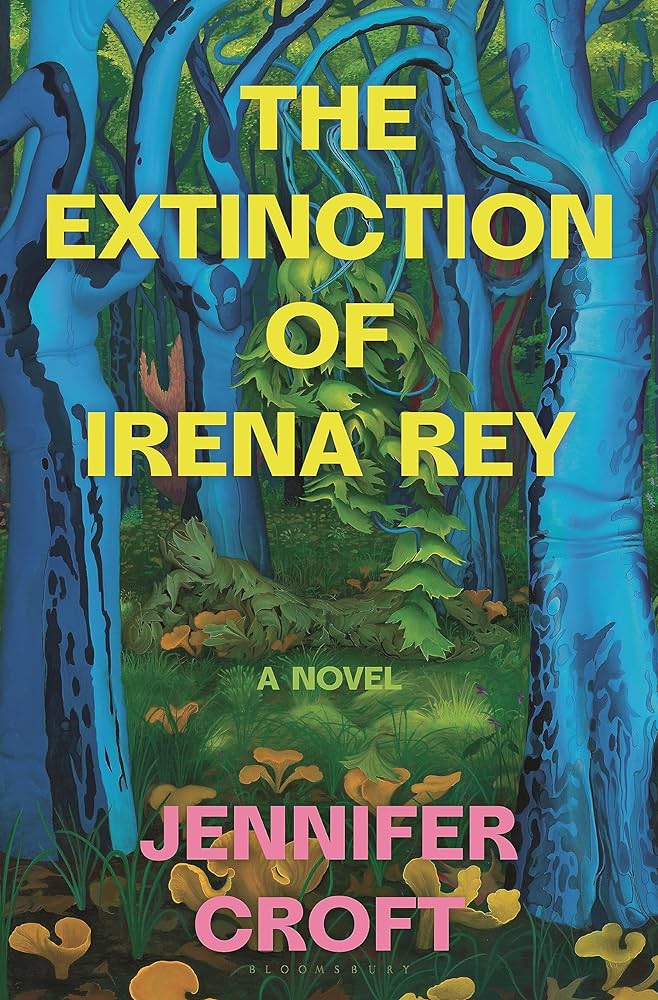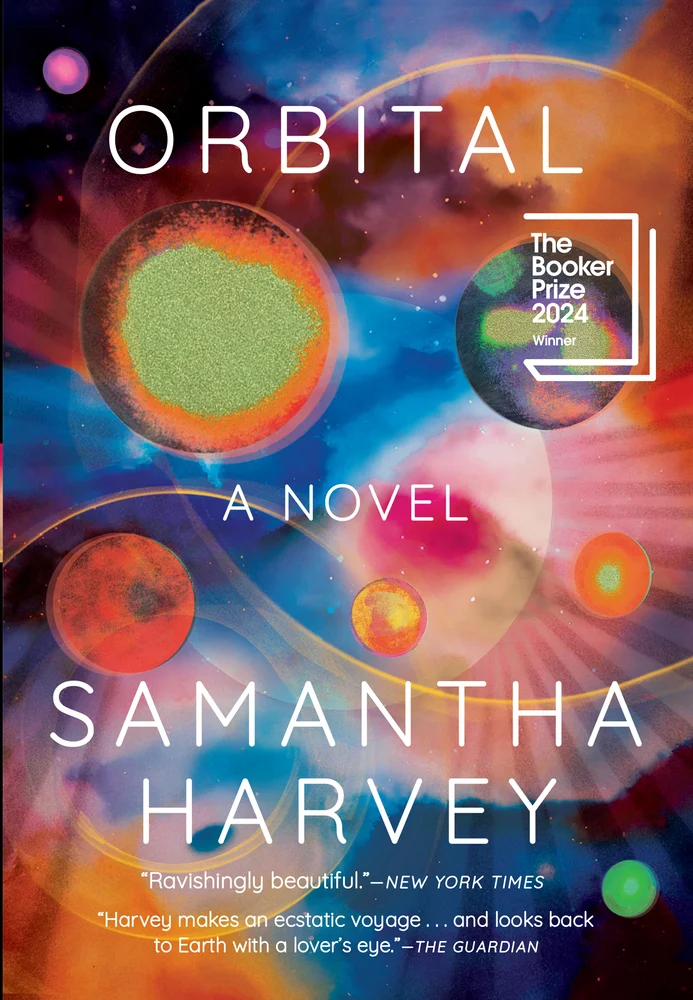By JENNIFER CROFT
Review by CHRIS JOHN POOLE
At first, the autobiographical roots of The Extinction of Irena Rey seem simple to trace. This is a novel by writer-translator Jennifer Croft, who works in Spanish and Polish; its protagonist is a Spanish writer-translator. This is a novel from the acclaimed translator of Olga Tokarczuk’s Flights; the eponymous Irena Rey is a Polish literary megastar. This is a novel from a staunch advocate for translators’ visibility; its eight main characters are all translators who seek—and perhaps supplant–their elusive muse.
Yet it is the very abundance of extratextual parallels that makes it so difficult to situate Croft within her text. Unlike Croft’s debut Homesick, a hybrid novel-memoir, The Extinction of Irena Rey provides no single stand-in for its author; instead, a network of interlinked characters echo Croft’s own life. From the novel’s tantalising biographical parallels, countless questions arise: is Irena Rey modelled on Tokarczuk or Croft? Is protagonist Emilia a self-insert, or a novel creation? Ultimately, it seems, these characters are hybridisations of Croft and her influences, as within this novel the lines between self and other, like those between truth and fiction, begin to blur.
The Extinction of Irena Rey opens as Irena Rey summons eight translators to her home. Her new novel, Grey Eminence, is ready for translation. Rey lives in Bialowieza, an ancient forest on the border between Poland and Belarus—an appropriate site for translators and languages to coalesce.
Rey’s eight translators are so committed to their work that they use their respective languages as pseudonyms. The novel’s narrator and protagonist goes by ‘Spanish’, while her bitter rival is ‘English’. Through these eponyms, the translators attain the anonymity so often associated with their trade. The translators’ commitment verges on cultish adoration of Rey and her work. Spanish describes Rey as ‘Our Author’; Rey prohibits the translators from translating other writers.
After a run of bizarre rituals, Rey disappears. Launched into a haphazard investigation, the translators search her home. Rather than crossing linguistic divides, as they are used to, the translators traverse the ambiguous boundaries of privacy and courtesy.
Initially, Rey’s home confirms the idealised image which the translators hold of her. Rey carefully curates her home décor: statues of pagan gods litter communal spaces, and an ancient mace hangs on the wall. Rey’s home, like her writing, conveys and constructs a particular self. Her home is designed to present a mythologised Irena Rey, continuing the self-invention inherent to literature.
Soon, though, Rey’s translators access the repressed, marginalised spaces of her home: hidden rooms, treasure chests, the author’s laptop. An elaborate, fictionalised image of Irena Rey becomes challenged by revelations of her flaws, failings, and lies. Navigating Rey’s home, the translators displace the authorial self which Rey has created. Paradoxically, Rey’s disappearance makes her more real.
As the translators unravel Rey’s artificially constructed self, they undergo a similar change—such is the receptivity between translator and author. They reveal their names and personal lives. ‘Spanish’, we learn, is Emilia; ‘English’ is Alexis’; ‘Swedish’, Emilia’s crush, is Freddie. The translators share details about their spouses, creative projects, and traumas. They transition from figureheads of their languages to real people, just as Rey shifts from mythologised ‘Author’ to a real, complicated woman.
Rey’s home underlines the disconnect between abstracted selves and the real people who create them. Similarly, the surrounding forest, Bialowieza, reveals the divide between nature’s fluidity and the artificial limits imposed on it. Its boundaries are rigidly drawn: a border splits Belarus from Poland; fences wall off private property; xenophobes view migrants as intruders.
Yet the underlying ecosystem remains hybridising and amorphous. Parasitic mushrooms convert death into life and life into death; folk pageantry transmutes into real violence; Freddie bends to harvest a mushroom and realises it is a snake. Bialowieza is at once rampantly fluid and rigidly divided, reflecting a dissonance between nature and humanity.
In one instance, Emilia travels to the local graveyard. She wants to ask the dead to stop haunting her colleague, Petra, in her nightmares. On her quest, Emilia encounters several blurred and traversable boundaries: for example, her phone loses reception as it switches to a Belarusian carrier. She considers how even the most fundamental distinctions are challenged by Bialowieza: “you couldn’t really tell life and death apart in a forest like this.”
Addressing the graveyard’s occupants, Emilia attempts to reassert the boundary between the living and the dead, fencing off Petra’s dreams as private land. Yet the episode culminates in defamiliarisation, as Emilia stomps what she thinks is the first spark of a forest fire: “I stomped until I heard, through the dull roar of my panic, the sound of a Roman snail shell cracking apart”. Emilia enters the forest to draw a line in the sand, but she encounters untameable fluidity. In attempting to prevent destruction, she destroys.
Bialowieza’s fluidity underpins its ecology and history, and infiltrates the translators’ relationships. It also seeps into language itself. The novel is alert to how language is itself a system of rigid distinctions, cleanly dividing words and concepts: it reveals that there is little difference between a demarcated border and a neatly defined unit of vocabulary. Croft therefore seeks to disrupt language’s certainties and efface its borders, employing a rich blend of puns, misapprehensions, and malapropisms. Beyond furnishing the novel with its wit, these features erode the thin lines within and between languages, concepts, and categories.
For example, Croft links the deity Perun with Argentine politician Perón; Freddie says biography when he means biology; Leshy, a mythical forest protector, is a near-namesake to Leszek, a park ranger, and a cattle breeder called Lutz Heck. Through these linguistic conflations, Croft erodes the rigid separations between concepts and terms. Language comes to reflect Bialowieza’s fertile hybridisation; language loosens the rigid distinctions which are otherwise its basis.
Names, too, further evoke the tension between the abstract and the tangible. Noting the parallels between Perun and Perón, or Leshy and Lezcek, one is reminded of the novel’s dual figures: ‘Our Author’ and the idiosyncratic Irena; ‘Spanish’ and Emilia; ‘English’ and Alexis. Linguistic similarities link real figures with abstract figureheads. This reinforces the tension between Bialowieza’s material fluidity and the artificial concepts which define its limits.
Landscape and language shift and flow; the search for Irena Rey thus becomes an attempt to impose form on formlessness. The translators may not erect any fences, but they do attempt to synthesise structure and meaning from an anarchic landscape.
Prior to her disappearance, Irena Rey gifts her translators a leathery substance called amadou. Amadou is a rudimentary fuel made from mushrooms, which early humans used to make fire. Exploited to the brink of extinction, amadou was supplanted by the safety match.
Amadou is the symbolic inverse of the wild mushrooms which riddle Bialowieza. Wild mushrooms embody nature’s volatile hybridity; amadou represents how humans have moulded nature into rigid, instrumentalised form. Amadou and mushrooms encapsulate the novel’s core dichotomies: rigidity and fluidity, constancy and change. Humanity and nature. Text and translation.
In giving amadou to her translators, Rey appears to tacitly warn against the destructive effects of imposing rigid boundaries on nature: be it through language, nationhood, or the extraction of resources. This warning is corroborated midway through the novel, as Emilia reads Irena Rey’s latest novel, Grey Eminence.
Grey Eminence is accessible only through the glosses provided by its translators. In Emilia’s view, it is a novel which condemns human culture: “it seemed to me Irena’s novel was suggesting that our current extinction event…was the direct result of art.” Grey Eminence, Emilia argues, frames art and language as “a system of abstractions intended to stand in for the real world.” Rey’s home is said to epitomise this: “An elegant home like Irena’s meant razed earth and mutilated trees.”
According to Emilia, Grey Eminence asserts that culture, in its creation of ‘abstractions’, contradicts the material fluidity of Bialowieza. The climate crisis is therefore the apotheosis of a gradual alienation from the natural world. Appropriately, in 2017—the time when The Extinction of Irena Rey is set—Bialowieza is under threat of being artificially converted into an oak monoculture. Oaks, chosen for their national symbolism, will destroy the biodiversity (and associated fluidity) found in Bialowieza, leading to ecological collapse.
Grey Eminence claims that art and culture disrupt nature’s fluidity, hastening its collapse. It is therefore a novel which rejects itself. But what of The Extinction of Irena Rey? Does this novel concede that, even in evoking hybridity, it contributes to the potentially destructive process of abstraction?
This question gains particular significance where the novel implies that thought itself inevitably imposes structures: that knowledge necessarily entails a system of distinctions and categories. If human intelligence invariably hinges on such structures, Croft’s novel, as an expression of intellect, risks perpetrating the sins it condemns.
The novel’s greatest defence, though, lies in its formal hybridity. An introductory note establishes its metatextual conceit. The note explains that The Extinction of Irena Rey was originally written in Polish by its protagonist, Emilia. It was then translated into English by Alexis. The novel we are reading is therefore the product of two rivals trying to inhabit the same text.
To some extent, Emilia and Alexis embody two prevalent translation approaches, and the poles of the novel’s core dichotomy. Emilia, an endlessly faithful translator, wrestles with Alexis, who willingly transforms and rewrites. Emilia rigidly reproduces; Alexis reinvents. By containing both of their voices, The Extinction of Irena Rey becomes not a static territory, but a battleground and borderland for two opposed, interlinked forces.
As Emilia and Alexis trade blows, they become impossible to separate. Melding two dichotomised figures, the text preserves some of Bialowieza’s fluidity. Just as there is no definitive counterpart for Croft in this novel, there is, if we accept the metatextual conceit, no ‘definitive’ version of the text. It may be this hybridity which best resists the rigid distinctions at the core of knowledge, novel, and language. Of course, it remains possible that Alexis has imposed borders of her own, displacing Emilia like the “mutilated trees” at the foundations of Rey’s home.
The Extinction of Irena Rey charts the tensions between abstraction and reality, between rigid human categories and nature’s violent fluidity. In its formal hybridity, it explores how the novel might be extricated from the worst implications of abstraction and division. The Extinction of Irena Rey leaves us to wonder whether human culture, hinging on rigid separations, can ever apprehend—or represent—the nature of nature itself. Its own attempts, meanwhile, bear rich fruits.
Chris John Poole is a writer and translator. His interests include climate change, Latin American fiction, experimental poetry, horror, and translation. You can read his work in The Big Issue, The Lead Magazine, and others. He tweets rarely and reluctantly @ChrisPoole771.





